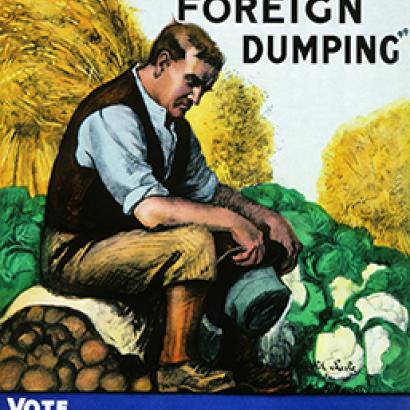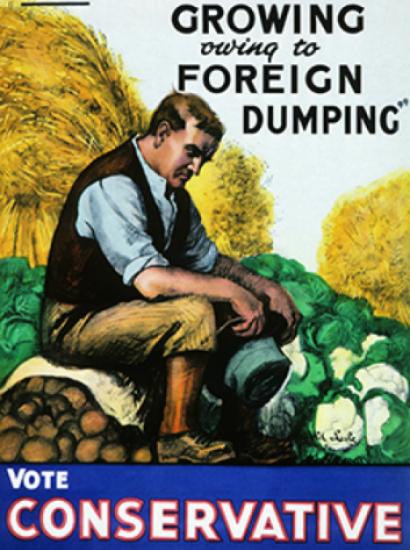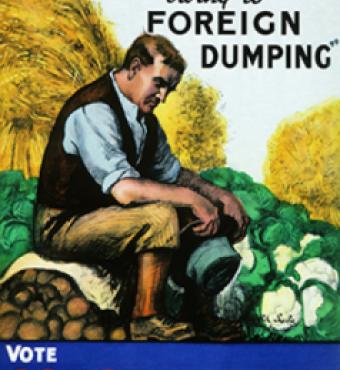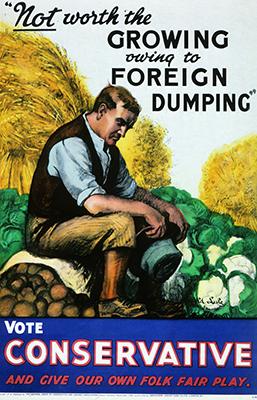- History
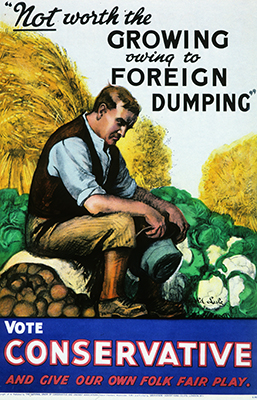
“Fluff.” That’s what Derek Scissors called the “very substantial phase one deal” President Trump announced on October 11, as Chinese trade negotiators, also in the Oval Office, looked on.
Why would the leader of the world’s largest economy agree to an insubstantial arrangement? Scissors, a scholar at the American Enterprise Institute, gave this explanation to the Washington Post: “because no one in the administration really wants to go through with the tariffs anyway.”
Additional U.S. tariffs on Chinese goods were scheduled to rise soon after the Oval Office meeting.
The aversion to tariffs—Scissors was not the only Washington analyst reporting that the Trump administration did not like them—raises the issue of whether these measures work. More to the point, have tariffs or even stiffer measures like sanctions or embargoes ever achieved concessions from hostile powers and therefore avoided war?
The answer is yes, but only when those measures have been part of well-crafted strategies implemented in disciplined fashion over long periods. The matter is pertinent because the Trump administration, through tariffs and sanctions, is trying to substantially change Beijing’s trade behavior, which has been, over the course of decades, both criminal and predatory.
The president imposed the tariffs in question under the authority of Section 301 of the Trade Act of 1974 as a remedy for the theft of American intellectual property. Chinese entities each year, by criminal and forceful means, take hundreds of billions of dollars of U.S. innovation. Moreover, the Chinese have consistently violated their obligations to America, those contained in both its World Trade Organization accession agreement and in bilateral deals with Washington.
Trump’s tariffs have dented China’s economic growth—especially growth in the country’s export sector—but there is, as American trade expert Alan Tonelson told Strategika, “little evidence that the tariffs have spurred any changes in China’s predatory trade or technology policies.”
The Section 301 tariffs first went into effect only in July 2018, and Trump has yet to raise these tariffs to levels that could significantly affect decision-making in Beijing. In short, the Trump tariffs are not yet a true test of the effect of such coercive measures.
“Economic sanctions are not fly swatters, picked up occasionally,” Arthur Waldron of the University of Pennsylvania told Strategika. “They are effective only when imbedded in a larger, well-conceived and systematic policy.”
America in the aftermath of the Second World War, had such a policy. It was articulated in, most famously, Kennan’s Long Telegram of February 1946, and the result, Waldron notes, was “a policy of treating the USSR and Eastern Bloc comprehensively and consistently, which included strict economic controls.” This was, he remarked, “truly a strategy.”
Unfortunately, it was not a strategy that survived the Cold War. Historians, after the fall of the Soviet Union, denigrated the effect of containment, and policymakers adopted the opposite approach, “engagement,” with China. “That was bad history, which led to bad policy,” Waldron told me. “Hence the current situation.”
The current situation is none too good. Engagement has enriched and strengthened a ruling group that has become more hostile over time, moving in especially dangerous directions after Xi Jinping took over China at the end of 2012.
So will the opposite of engagement now work? It is, according to Tonelson, already doing so. “A second track of Trump China policies—unilateral measures clearly aimed at decoupling the two economies—has achieved impressive success,” he told me. Trump, Tonelson says, has crimped trade, investment, and technology flows, thus reducing Beijing’s access to the U.S. market and cutting off the supply of needed American components. Trump has also severed tech transfers to more than 30 Chinese companies by having the Commerce Department add them to its Entity List.
Trump’s tariffs have also pushed the two economies apart by convincing companies—Google, GoPro, Nintendo, Fitbit, and RH, among others—to move parts of their supply chains off Chinese soil. Many in the business community obviously fear the “trade war” is actually a broader struggle and will continue for years.
“Tariffs are working far better than anyone ever anticipated,” Trump tweeted August 4. Many at the time assumed he was referring to success in convincing the Chinese to improve their trade behavior, but it appears the 45th president had broader goals in mind.
Trump made clear his ultimate intentions with his four-part August 23 tweet ordering American companies “to immediately start looking for an alternative to China.” Most observers thought he was not serious and in any event had no power to force them out of China, but he in fact has the authority thanks to the Trading with the Enemy Act of 1917 and the International Emergency Economic Powers Act of 1977. Trump is returning to a successful containment model of economic relations.
That model could especially work now that China is fragile, with economic growth rates falling to historic lows, with evident political turmoil in Beijing, with worldwide criticism of its internal and external policies, and with a growing independence movement in Hong Kong.
Trump’s varied actions against a vulnerable Chinese state, therefore, can defang it and maybe avoid conflict by reducing its ability to confront the U.S. Whatever may happen, his restrictive policies, despite sometimes backtracking into fluff, are beginning to impoverish a dangerous competitor.
The United States has not had a robust, well-conceived, and systematic China policy for decades. Perhaps we are seeing the beginning of one now.
Gordon G. Chang is the author of The Coming Collapse of China. Follow him on Twitter @GordonGChang.







